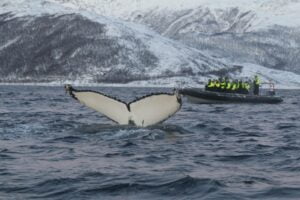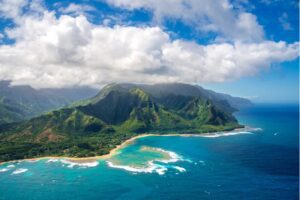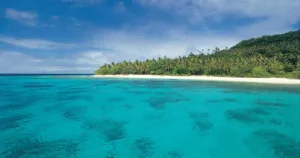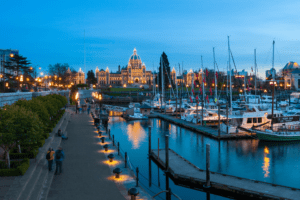Best Whale Watching in Australia: Guide 2024
Australia offers you a front-row seat to one of nature’s most magnificent shows: whale watching. With vast coastlines in both the Southern and the Indian Oceans, this continent is a haven for marine life, including an array of whale species. The experience of seeing these gentle giants in their natural habitat is not only awe-inspiring but provides critical support for conservation efforts focused on these marine mammals.
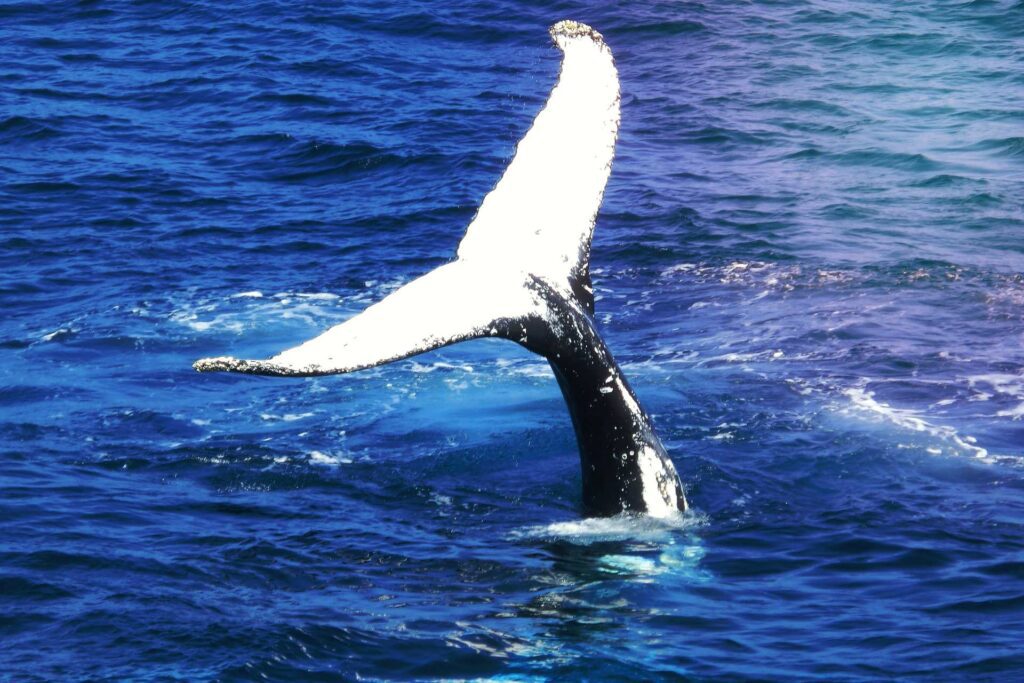

Your whale watching adventure could take you to a variety of locations, from the picturesque bays of Western Australia, where humpback whales and southern right whales play in Flinders Bay, to the world’s first whale heritage site in Hervey Bay on the east coast, lauded for its responsible human-wildlife interactions. Timing your visit is key; the best periods typically range between May and November, depending on the area and whale species you’re hoping to encounter.
In addition to the seasonal migration patterns, certain destinations like Sydney offer you the chance to witness humpback whales breaching close to the shore. These majestic creatures’ movements and behaviors, from breathtaking breaches to serene swims, create a spectacle that draws visitors from around the globe. So, grab your binoculars and set out on an oceanic journey that will leave you with a greater appreciation of the ocean’s gentle giants.
Top Whale Watching Destinations Australia
Australia’s sprawling coastlines offer a seascape where the majestic dance of whales captivates the heart of spectators. Whether you’re seeking affordable whale watching cruises in Australia or aiming to visit during the peak whale watching season in Australia, the following destinations provide unforgettable experiences. Get ready to immerse yourself in the marine magnificence of these top-notch locations.
The Splendors of Hervey Bay
Revered as the whale watching capital of Australia, Hervey Bay affords you the chance to witness humpback whales frolicking in the sheltered waters. Its calm seas offer an ideal nursery for mothers and calves, ensuring your visit is graced with tender moments of marine bonding.
The Breathtaking Ningaloo Coast
On the west coast, the Ningaloo Reef ushers you into pristine waters teeming with biodiversity. Here, humpback whales and the colossal whale sharks traverse the ocean expanse, offering a spectacular dual viewing opportunity that’s rare and exhilarating to behold.
Sydney’s Majestic Marine Parade
Sydney’s coastline is nothing short of dramatic, with guided tours showcasing the fusion of urban vistas and natural splendor. Your marine adventure is complemented by the iconic Sydney Harbour, where the presence of migrating whales adds a thrilling layer to the city’s panoramic charm.
| Location | Specialty | Best Time to Visit | Unique Offer |
|---|---|---|---|
| Hervey Bay | Humpback Whale Nursery | July to November | Up-close encounters with whales |
| Ningaloo Coast | Dual sightings: Whales & Whale Sharks | March to July | Snorkeling with whale sharks |
| Sydney | Urban Whale Watching | May to November | Vistas of the Opera House and Harbour Bridge |
Regional Seasonal Variations
Australia’s vast coastline presents a mosaic of whale watching opportunities. To aid in your planning, here’s a comprehensive view of the top regional offerings:
| Region | Whale Species | Best Viewing Months |
|---|---|---|
| Hervey Bay, QLD | Humpback Whales | July to November |
| Ningaloo Coast, WA | Humpback Whales, Whale Sharks | March to July (Whale Sharks) June to November (Humpback Whales) |
| Great Australian Bight, SA | Southern Right Whales | June to October |
| Byron Bay, NSW | Humpback Whales | June to November |
| Freycinet Peninsula, TAS | Humpback Whales, Southern Right Whales | May to July (Humpback Whales North Migration) September to November (Humpback Whales South Migration) June to August (Southern Right Whales) |
An informed choice about when to go whale watching can significantly enhance your chances of witnessing these magnificent creatures. With the whale watching season in Australia varying by region and species, planning with these insights ensures that you’re in the right place at the right time. Whether it’s the stunning breaches of humpbacks off the coast of Hervey Bay or the serene presence of Southern Rights in the Great Australian Bight, your connection with nature awaits.
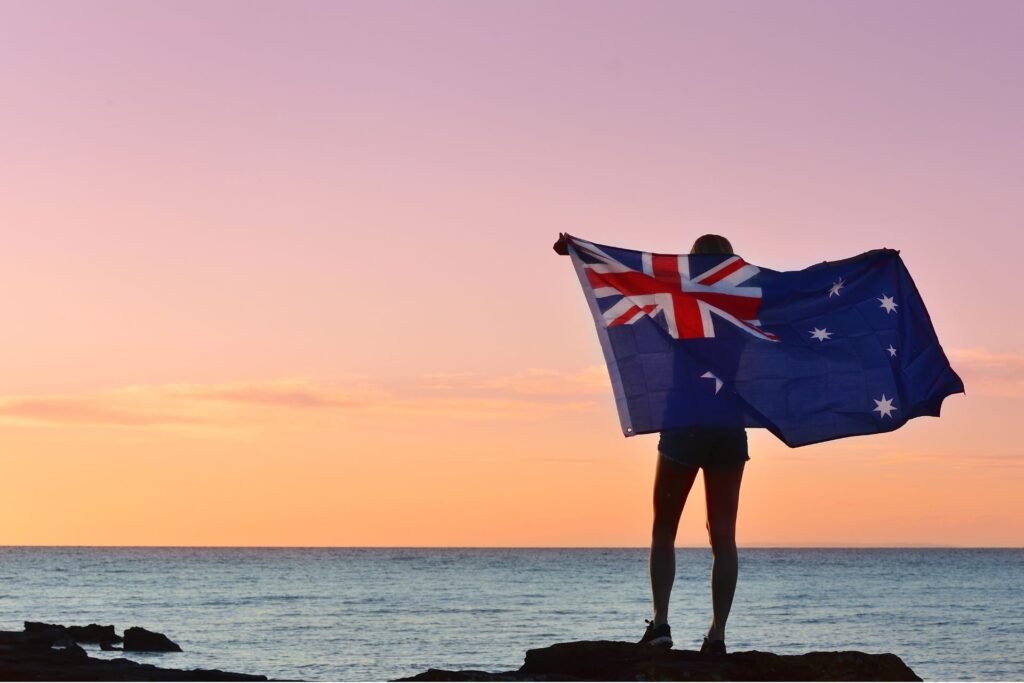

Getting There
When planning your whale-watching adventure in Australia, optimal planning for your journey ensures a seamless experience. Whether you’re flying in or navigating on land, knowing your options will set the tone for an unforgettable trip.
Flight Options and Air Travel Tips
Australia is well-connected by a robust network of airports, with international gateways including Sydney, Melbourne, Brisbane, and Perth, which welcome flights from major cities all around the world. For a smooth flight experience, always compare airline prices and transit options in advance, and consider a flexible travel insurance plan to accommodate any unforeseen changes.
- Baggage: Check airline baggage limits to avoid fees. Whale watching gear can be bulky!
- Connectivity: Many Australian airports offer free Wi-Fi, so you can stay connected upon landing.
- Comfort: Long-haul flights can be exhausting; stretching and staying hydrated is key.
Ground Transportation: From the Airport to Your Hotel
Once you touch down, you have several options to reach your hotel:
- Shuttles: Many hotels offer shuttle services from the airport.
- Taxis and Rideshares: Available at taxi ranks or via apps, they offer door-to-door service.
- Public Transport: Buses and trains can be a budget-friendly alternative, though less convenient with luggage.
- Car Rentals: Ideal for exploring at your own pace and for reaching remote whale-watching locations.
Remember to check in advance if your hotel provides airport pickup services. This could save you time and offer convenience after a long flight.
Best Time to Visit
To maximize your whale watching experience in Australia, timing is critical. Knowing when to go and what to expect weather-wise will ensure you have the best opportunity to see these magnificent creatures.
Whale Watching Seasons: When to Go
May to November is broadly the best time of year for whale watching in Australia, as this is when you can witness the incredible humpback whale migration along the east and west coasts. On the east coast, particularly in places like Sydney, the prime time to spot humpback whales is usually from June to November when they migrate northwards for breeding and warmer waters, before heading south again.
- East Coast: May – November
- Peak months: June, July, September, October, November
- West Coast: May – December
- Peak months: June, July, August
The southern right whale migration is also a spectacle not to be missed, typically observable from June to October when they frequent southern Australian shores.
Best Time for Whale Watching Australia
Embarking on a whale watching adventure in Australia is an enthralling experience that requires timing to be just right. Understanding the best time for whale watching Australia is critical in planning your trip. Whether you’re hoping to gaze on the magnificent humpback whale or catch a glimpse of the rare blue whale, knowing the peak months for different species is the key to a successful whale watching outing.
Seasonal Guide for Optimal Whale Sightings
An important aspect to consider is the migratory patterns of whales. They travel to breeding grounds during certain times of the year, which can vary from region to region. To assist you, here’s a simple guide that pinpoints the best period to watch these majestic creatures based on the species and Australian coastline regions.
| Species | Best Viewing Time | Prime Locations |
|---|---|---|
| Humpback Whale | May to November | East Coast, West Coast, and Tasmania |
| Southern Right Whale | June to October | South Australia, Victoria, and Western Australia |
| Dwarf Minke Whale | June and July | Great Barrier Reef |
| Blue Whale | March to April, November to December | Perth Canyon, Western Australia and Bight Basin, South Australia |
| Orca (Killer Whale) | January to March | Bremer Bay, Western Australia |
Tour Timing: Sunset Vs. Daylight Cruises
When deciding on the timing of your cruise, consider the unique atmosphere that a sunset or daylight cruise can offer. Daylight cruises provide clear visibility and the warmth of the sun, which are ideal for photography and long hours of whale watching. On the contrary, sunset cruises offer a magical backdrop with the potential of an enchanting golden hour known to inspire awe.
Weather Conditions and Wildlife Activity
While timing is a significant factor, the local weather conditions also play a part in the frequency of whale sightings. Calm seas and clear skies often lead to more prolific whale activity. Therefore, it’s advisable to check the weather forecasts before booking your tour. Alongside weather, other wildlife activity, such as the presence of baitfish, can attract whales to the surface, enhancing your whale watching experience.
Weather Patterns and Tourist Crowds
When planning your whale watching trip, it’s also essential to consider the weather patterns. Australia’s winter months, June to August, provide cooler but generally stable conditions for whale watching. The trade-off, however, is that these months often coincide with school holidays, which can mean larger tourist crowds at popular viewing spots.
- Winter: June – August
- Cooler weather, stable sea conditions, potential for crowds
- Spring: September – November
- Warmer weather, end of peak whale sightings, thinner crowds
September embodies a sweet spot with the continuation of the migration and a decrease in tourist traffic. This month also slightly increases your chances of seeing newborn calves as they make the journey alongside their mothers. In choosing your time to visit, weigh the pros of cooler, less crowded tours against the cons of potentially chilly conditions.
Whale Watching Guide


Embark on a captivating journey to witness some of the ocean’s most majestic creatures in their natural habitat around the Australian coastline.
Overview of Whale Watching in Australia
Australia’s vast coastline offers some of the best whale watching opportunities in the world, with a season extending from May to November when these gentle giants migrate. You’ll be joining thousands of enthusiasts who flock to various Australian coasts to catch a glimpse of these marine mammals.
Types of Whales You Can See
During the migration season, you can spot a variety of whale species. The most commonly seen are the humpback whales and southern right whales. If you’re lucky, you may also observe blue whales, minke whales, orca, and even sperm whales as they pass through Australian waters.
Whale Watching Spots
- Western Australia: Flinders Bay in Augusta is a hotspot from early June, while Geographe Bay in Dunsborough comes alive in September.
- Queensland: Hervey Bay is acclaimed as the Whale Watching Capital of Australia.
- South Australia: For sightings near Adelaide, Victor Harbor is a key location.
- New South Wales: Eden in the Sapphire Coast prides itself on excellent whale watching conditions.
Choosing Your Whale Watching Tour
Selecting a tour operator, such as Naturaliste Charters, who are experienced and have respect for these marine creatures, is crucial. They offer insightful information on whale behavior and contribute to a respectful and enjoyable experience.
Tips for a Memorable Whale Watching Experience
- Dress in layers as it can get chilly at sea.
- Bring binoculars for a closer look at the whales.
- Opt for tour operators with a whale sighting guarantee for a reliable experience.
- Be patient and keep your camera ready for sudden appearances like breaching.
Remember, you’re venturing into the natural habitat of these magnificent creatures, so respect and patience are paramount during your adventure.
Accommodation Guide


When planning your whale watching adventure in Australia, your choice of accommodation can enhance the experience. Whether you prefer the indulgence of luxury stays, value the affordability of budget accommodations, or want the convenience of staying near major whale watching sites, you’ll find options to suit your preferences.
Luxury Stays: Top Picks for Comfort and Style
1. The Azure Retreat: Nestled near the Hervey Bay shore, this five-star haven offers private balconies with ocean views and personalized whale watching tours.
- Location: Hervey Bay
- Amenities: Spa, Gourmet Restaurant, Infinity Pool
- Price Range: $$$$$
2. Oceanview Estates: Close to the renowned whale watching spots of Augusta, these plush suites offer a blend of luxury and tranquility.
- Location: Augusta, Western Australia
- Amenities: On-site Vineyard, Wellness Center, Private Tours
- Price Range: $$$$$
Budget-Friendly Accommodations: Great Value Options
1. The Seaside Hostel: A vibrant, community-oriented option provides an affordable base for exploring the waters of Dunsborough.
- Location: Dunsborough, Western Australia
- Facilities: Community Kitchen, Shared Lounges, Free Wi-Fi
- Price Range: $
2. Hervey Bay Budget Lodge: A no-frills, comfortable stay that offers easy access to local whale watching tours without breaking the bank.
- Location: Hervey Bay
- Facilities: Family Rooms, Tour Booking Desk, BBQ Area
- Price Range: $
Staying Near Whale Watching Sites: Recommendations
1. Whale Song Hotel: Overlooking Geographe Bay, it positions you perfectly to join the seasonal whale watching excursions.
- Location: Geographe Bay
- Notable Features: Proximity to Tours, On-site Dining, Family-friendly
2. Marine Bay Apartments: Self-contained apartments providing a home-like experience, a short walk from the whale heritage site in Hervey Bay.
- Location: Hervey Bay
- Notable Features: Full Kitchens, Laundry, Walking Distance to Pier
Food and Dining


When you’re not scanning the horizons for breaching whales, Australia offers a diverse array of culinary experiences. Local dishes reflect the country’s rich cultural tapestry, and there’s something for every palate and pocketbook.
Must-Try Local Dishes and Where to Find Them
Barramundi: This iconic Australian fish is a must-try, often grilled and served with a refreshing salad. You’ll find it in seafood restaurants along the coast, especially in regions close to the Great Barrier Reef.
Kangaroo Steak: Lean and rich in flavor, Kangaroo steak represents a unique Australian dining experience. Look for it in specialty restaurants nationwide, particularly those that focus on local, sustainable cuisine.
Restaurant Recommendations for Every Budget
- Budget-Friendly: For a wallet-friendly meal, check out local fish and chip shops, where you can savor fresh local seafood without breaking the bank.
Mid-Range: Bistros and cafés often feature locally sourced produce and meats. Browse the menus of eateries in towns like Margaret River and Byron Bay for a mid-priced meal.
Fine Dining: If you’re looking to splurge, Australia’s capital cities boast a range of upscale restaurants. Places like Quay in Sydney offer a premium dining experience with stunning harbor views.
Tips for Saving on Dining Out in Australia
Lunch Specials: Many restaurants offer lunch specials which can include a main, a drink, and sometimes a dessert for a fraction of the dinner price.
Share Plates: Opt for shared plates or ‘tapas’ style dining which allows you to try a little bit of everything and can often save you money compared to ordering individual plates.
Transportation Tips
When planning your whale watching adventure in Australia, getting familiar with the local transportation options is essential to ensure a smooth and enjoyable trip.
Getting Around Australia: A Primer
Australia’s vastness can be a challenge when traveling between major whale watching destinations. To maximize your time, consider internal flights for longer distances, particularly when traveling between states. Major airlines such as Qantas and Virgin Australia operate regular flights linking key cities. For a scenic route more aligned with leisurely travel, Australia’s rail network offers journeys such as The Ghan and Indian Pacific that provide a unique view of the country’s landscape, albeit at a slower pace. Book tickets in advance to secure the best fares and availability.
Public Transportation: Routes and Tips
Each major city in Australia boasts a network of buses, trains, and ferries that can take you to many coastal areas known for whale watching. In cities like Sydney or Brisbane, utilize the Opal and Go Card systems respectively, which offer convenient tap-on, tap-off payment options. Familiarize yourself with the specific routes that cater to coastal regions and plan your trip according to the scheduled times. Since some remote areas may be less accessible by public transit, it is wise to check schedules in advance and consider alternative modes of transport for the last leg of your journey.
Taxi and Rideshare Services: What You Need to Know
Taxis and rideshare services are readily available in metropolitan areas, offering a convenient mode of transport for your whale watching escapades. The benefit of using services like Uber, Ola, or a local taxi is the door-to-door service, which can be especially valuable if public transportation doesn’t directly service your exact destination. For budgeting purposes, rideshare apps offer fare estimates, and taxis should provide you with a fare calculation upon request. Keep in mind that in more remote whale watching locations, these services may be limited, so pre-booking is recommended for peak whale watching times.
Additional Attractions and Activities
While you’re exploring the stunning coastlines of Australia for whale watching, you also have ample opportunity to immerse yourself in the country’s rich cultural heritage, engage in thrilling outdoor adventures, and embrace the ultimate relaxation experiences.
Cultural Attractions: A Deep Dive into Australia’s Heritage
You can enrich your journey with a tour through Australia’s cultural tapestry. Visit the vibrant Aboriginal communities in The Kimberley to understand ancient traditions and view rock art that’s stood the test of time. Meanwhile, museums and cultural centers across the country offer a glimpse into Australia’s historical saga.
Adventure and Outdoor Activities: Beyond the Sea
Embark on an adventure in the great outdoors with activities aplenty. Go snorkeling in the Great Barrier Reef, a world beneath the waves teeming with life and color. Or, conquer the rugged landscapes on hikes through national parks and witness the raw beauty of Australia’s diverse ecosystems.
- Great Barrier Reef Snorkeling: Discover an underwater world.
- The Kimberley Adventures: Take on the vast wilderness.
Relaxation and Leisure: How to Unwind in Australia
After your oceanic encounters and cultural exploration, soothe your soul with leisure activities. Pamper yourself in luxury resorts along the coast or find peace in quiet beach-side towns. Enjoy a glass of local wine as you watch the sun dip below the horizon, painting the sky in hues of your memories in Australia.
Practical Information and Tips
Before heading out for whale watching in Australia, ensure you have all the necessary practical information. Familiarizing yourself with local nuances goes a long way toward a more enjoyable experience.
Navigating Language and Currency: Essential Tips
Language: While English is the primary language spoken in Australia, some terms may differ from other English-speaking countries. Understanding local Australian terms related to boating and marine life can enhance your communication with tour guides and locals.
Currency: Australia uses the Australian Dollar (AUD) for all transactions. It’s advisable to have local currency on hand since some locations might not accept credit cards, especially in more remote areas or on board boats.
Safety and Health: Staying Safe During Your Trip
Safety Gear: When on a whale watching boat, always listen to the crew and wear the safety gear provided. Conditions can change rapidly out at sea, so compliance with safety instructions is paramount for your protection.
Health: Remember to take any necessary medications with you, like seasickness pills if you are prone to motion sickness. Additionally, ensure you have adequate sun protection — sunscreen, a hat, and sunglasses are a must in the Australian climate.
Sustainability and Respect for Wildlife
Your experience with whale watching in Australia has the power to contribute to marine conservation and foster respect for the incredible wildlife in the ocean. Deliberate and informed participation in whale watching promotes sustainability and is vital for protecting these majestic creatures for future generations.
Contributing to Conservation Efforts in Australia
When you choose to participate in whale watching tours that prioritize conservation, you directly support efforts to protect marine life. Your patronage aids in funding research and conservation initiatives, providing critical resources necessary for the ongoing study and preservation of Australia’s whales and their habitats. By engaging with eco-certified operators, you ensure that a portion of the proceeds from your tour goes towards important conservation work.
Guidelines for Responsible Wildlife Watching
- Maintain a safe distance: Always keep a respectful distance from wildlife to minimize stress and disruption to their natural behaviors.
- Choose certified operators: Opt for tours that adhere to the Australian National Guidelines for Whale and Dolphin Watching 2017, ensuring a commitment to responsible practices.
- No feeding or touching: Interacting physically with wild animals can disturb them and negatively affect their health.
- Follow time restrictions: Limit the time spent observing any one group of whales to reduce the cumulative impact of human presence.
- Promote awareness: Share your experiences and knowledge gained from responsible whale watching with others to spread awareness of sustainable practices.
By adhering to these guidelines, you not only have a memorable encounter with Australia’s marine wildlife but also contribute to the larger picture of sustainability and conservation.
Frequently Asked Questions
Before planning your whale watching trip in Australia, it’s essential to know when and where to go for the best experience. This section answers common questions about seasons, locations, and timings for whale watching in Australia.
What is the best season for whale watching in Australia?
The best season for whale watching in Australia varies by location, but generally, it runs from May to November when whales migrate along the coast.
Which are the prime locations for whale watching in Queensland?
In Queensland, Hervey Bay is renowned for its whale watching experiences, offering close encounters with humpback whales.
What are the peak months for whale watching in Sydney?
Sydney’s peak whale watching months are typically between May and August during the northern migration and September to November during the southern migration.
Where along the Australian coast can you spot blue whales?
You can spot blue whales off the coast of Western Australia in places like Geographe Bay, particularly from March to April.
When is the whale watching season in southern Australia?
In southern Australia, including places like the Great Australian Bight, the whale watching season generally occurs from May to October.
Which location is known as the whale watching capital in Australia?
Hervey Bay in Queensland is often touted as the whale watching capital of Australia, offering sheltered waters where whales are known to gather.


